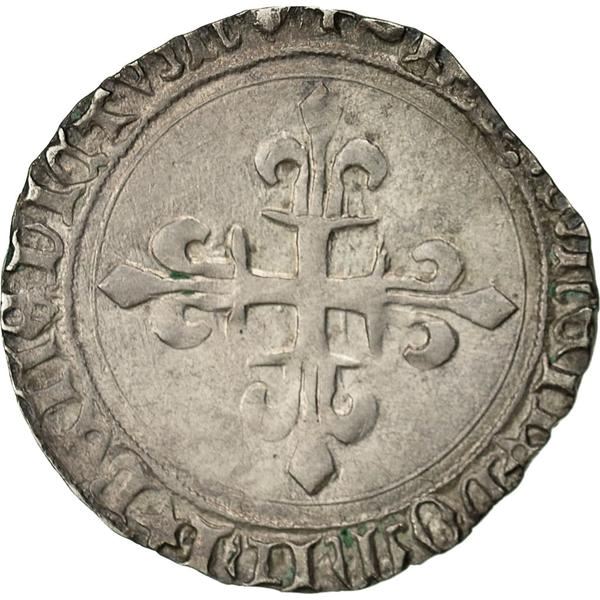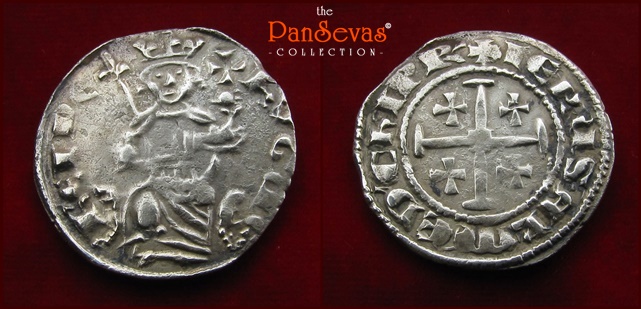The Gros was a medieval silver denomination originally struck in France, but also by some Crusader states. Though the names are related, it is larger than the German 'Groschen'.
The original gros created by Louis IX weighed about 4.52 g of nearly pure silver, and was valued at one sou, that is 12 deniers or 1/20 of a livre tournois. Unlike the gold écu that was minted in small numbers, mostly for prestige reasons, the gros was a very common coin, and very widely copied by non royal mints.
The original gros created by Louis IX weighed about 4.52 g of nearly pure silver, and was valued at one sou, that is 12 deniers or 1/20 of a livre tournois. Unlike the gold écu that was minted in small numbers, mostly for prestige reasons, the gros was a very common coin, and very widely copied by non royal mints.


Obverse: Hugh seated facing, holding scepter and globus; B to left.
Reverse: Jerusalem cross.
Diameter:
-
Die Orientation: -
Weight: -
Die Orientation: -
Weight: -
Lusignan Kingdom of Cyprus.
Hugh IV (1293?96 – 10 October 1359) was crowned as King of Cyprus at Saint Sophia Cathedral, Nicosia, on 15 April or 25 April 1324. In the same year, on 13 May, he was crowned at Saint Nicholas Cathedral, Famagusta as Titular King of Jerusalem (as Hugh II).
In 1344, he joined a league with Venice and the Knights Hospitaller which burnt a Turkish fleet in Smyrna and captured the city. In 1345 the allies defeated the Turks at Imbros by land and sea, but Hugh could see little benefit for his kingdom in these endeavors and withdrew from the league.
During his reign, he was strict about issues relating to justice. He was well educated and had an interest in art, literature, and philosophy and had much knowledge of Latin literature.
Hugh IV resigned the crown to his son, Peter I (rather than his grandson Hugh) in 1358, and died on 10 October 1359 in Nicosia.
Metcalf, Crusades 756; CCS 69.
